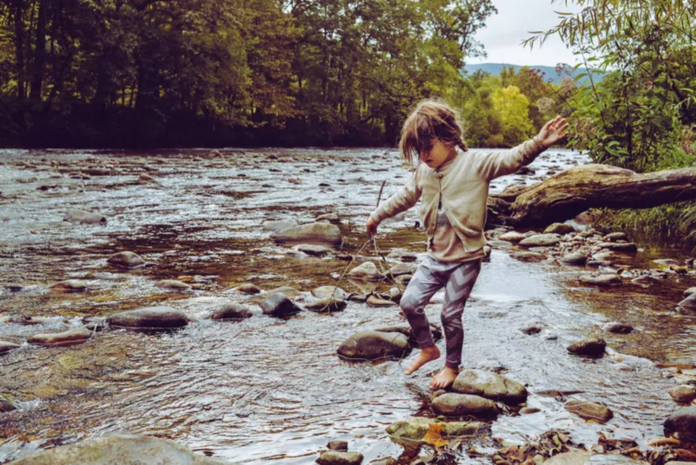Exposure to ‘blue spaces’ has life-long benefits for children
Study finds that spending time near water at a young age is linked to greater well-being later in life.
Summer afternoons at the beach, fall hikes along the edge of lakes, winter days skating on a frozen pond—these hours spent engaging with or near “blue spaces” have a profound effect on children and can lead to a greater sense of well-being in adulthood.
Blue spaces are outdoor environments, either natural or manmade, that feature water prominently and are easily accessible to people. They can be anything from an ocean coastline, river, or lake, to a town pond, a harbor, or even a fountain. They are the aquatic equivalent of green spaces, a subset of the broader concept of nature—and they matter a great deal, according to a new study from the University of Exeter.1
The study, published in the Journal of Environmental Psychology, drew on data from 15,000 people in 18 countries around the world (14 in Europe, plus Hong Kong, Canada, Australia, and California). People were asked to recall their childhood exposure to blue spaces.1
According to a press release, they were asked “how local [the blue spaces] were, how often they visited them, and how comfortable their parents/guardians were with them playing in these settings, as well as more recent contact with green and blue spaces over the last four weeks, and mental health over the last two weeks.”
The researchers found that adults who recalled more time spent near blue spaces had an ongoing yearning for natural settings in general and tended to visit them more frequently—which in turn boosted their mental well-being in adulthood.1
Treehugger reported on this a couple years ago, interviewing Mark Nieuwenhuijsen, director of Air Pollution and Urban Environment at ISGlobal, who conducted research on how beach walks improve mental health and mood. He said, “We saw a significant improvement in the participants’ well-being and mood immediately after they went for a walk in the blue space, compared with walking in an urban environment or resting.”
This latest finding is interesting for parents to know, as they decide how to spend time with their children and what to prioritize. This study suggests that setting time aside to visit blue spaces is wise, that it can be a useful tool in the general “parenting toolbox” of trying to raise healthy, happy humans.
Unfortunately, fear is often associated with these spaces, as they can be dangerous if a child (or parent) does not know how to swim. But this fear should be conquered, rather than allowed to become an obstacle.
Dr. Leanne Martin, one of the study co-authors, said that parents are right to be cautious around water, but that “supporting children to feel comfortable in these settings and developing skills such as swimming at an early age can have previously unrecognised life-long benefits.” Most interactions with blue spaces do not involve getting wet, however, and there are many advantages just to being near water, not necessarily in it.
Lead study author Valeria Vitale pointed out that these findings matter more than ever in a digital era. “In the context of an increasingly technological and industrialized world, it’s important to understand how childhood nature experiences relate to well-being in later life.”
Ongoing exposure to nature—and the inevitable attachment that will form—is crucial for raising future defenders of the natural world, people who realize the value of blue spaces (and other natural spaces) and feel compelled to advocate for their preservation. Unless children are given opportunities to forge those connections, it will be difficult for them to do so as adults, since they won’t know what they’re missing.
As a parent, I can speak anecdotally to the calming effect that water seems to have on my children. If we’re having a hard day at home, a walk to the nearby lake or town pond offers inevitable respite. It distracts and delights them, as there is much to observe and do. We always come away from it with lifted spirits, so it’s not hard to believe the researchers when they say that “building familiarity” with blue spaces “may stimulate joy.” Knowing that it can help my kids psychologically down the road is an added bonus.
For full references please use source link below.

